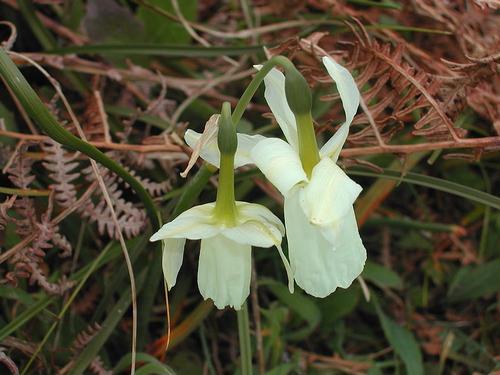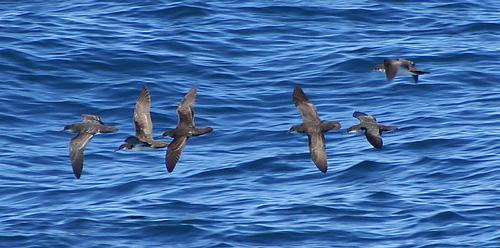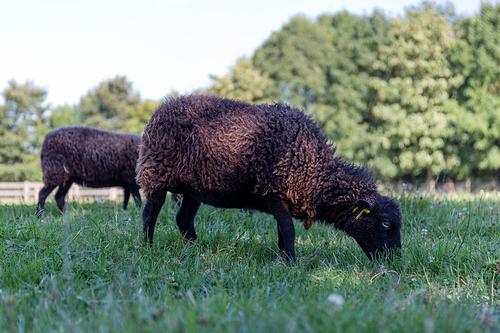BRITTANY
Plants and Animals

Plants and Animals

Popular destinations FRANCE
| Alsace | Ardeche | Auvergne |
| Brittany | Burgundy | Cevennes |
| Corsica | Cote d'azur | Dordogne |
| Jura | Languedoc-roussillon | Loire valley |
| Lot | Normandy | Picardy |
| Provence |
Plants and Animals
General
Brittany's plant and animal world is strongly influenced by the warm Gulf Stream. As a result, the temperature is higher and different plants and trees grow in Brittany than you would normally expect at this latitude. There are even some palm species. Brittany has no native plant and animal species. Only some native subspecies live there, e.g. the (green) scarab in the south and the daffodils of Glénan, which only grow on a few islands of the archipelago.
Plants

Due to its geographic location, you can find both Mediterranean and northern plant species in Brittany. For example, mimosa, hydrangea and camellia have been able to adapt due to the mild climate.
Five thousand years before our era, Brittany was largely covered by a dense belt of Brocéliande. Only 7500 ha of this primeval forest is left, the current Forêt de Paimpont. Pine trees, oaks and beeches grow there. There are also heather and gorse fields, which extend over an area of 2000 ha. At present, only about 10% of the Breton territory is covered with mainly oak and beech forests.
Sea oats and sea thistle grow along the coast, on the beaches and in the dunes, which, among other things, ensure the strength of the dunes. Furthermore, sea rocket, spurge, sea thistle, bindweed, carnation and various types of melde.
In addition to five types of heather, golden gorse, broom and dog rose also grow on the heathlands. The sandy, muddy coastal areas are covered with grayish, low vegetation such as samphire, lye herb, sea lavender and salt marsh. On the cliffs and rocky coasts special plants grow such as English grass, cuckoo flower, goldenrod, sea look, broom, small ferns and various lichens.
It rains much less on the island of Bréhat than on the mainland. Thanks to this exceptional microclimate, the vegetation can be called almost Mediterranean: eucalyptus, palm tree, mimosa, hydrangea and fig tree can be found here.
The daffodils of the Glénan archipelago are unique. Thanks to careful protection, the Glénan daffodil was kept from extinction; in 1993 more than 57,000 stems were counted. The vegetation around the river Étel in the Morbihan is also special with, among other things, gorse, gorse, heather, foxglove and the rare plant Eryngium viviparum.
The dunes of Keremna are considered a very special area on a European level because of its flora: more than 600 plant species grow in the most diverse environments: including Orchis pyramidalis, Dactolyrhiza praetermissa, the rare green tuberchis, wild thyme, stonecrop, creeping stable herb, creeping bindweed and sand oats.
Animals

As with the plants you will find in Brittany both Mediterranean and northern animal species. Sand pipit, raven and red chough have adapted to the mild climate from the north.
Brittany is very attractive to all kinds of sea birds. At the end of the summer, birds that have nested in northern Europe appear on the coast of Brittany. Some fly on to warmer places, but many spend the winter on the Breton coast. In the spring the hibernators leave again to the north to brood. Brittany's largest seabird is the gannet.
On the sandy beaches and dunes you will find the ringed plover, the European bee-eater and the three-toed sandpiper.
Bays and swampy coastlines are populated by sandpipers, herring gulls, egrets, shelducks, brent geese and oystercatchers.
Cliffs and rocky coasts are an excellent habitat for fulmars, puffins, shags and shearwaters.
The moors in the interior of Brittany are populated by hen harriers, curlews and garden warblers.
Snipe, moorhen and heron are examples of the bird life in fens and along river banks.
The guillemot hibernates on the coast of the Channel and the Atlantic Ocean. They breed in colonies on cliffs at Cap Fréhel and Cap Sizun, at Camaret and on the Sept-Îles.
In the Channel and the Atlantic Ocean, many crustaceans, spider or swimming crabs and sea snails such as the rough periwinkle, the brackish water horn, the pinhorn and the pelican foot are caught. Common types of fish include plaice, sea bass, mackerel, sole and sardine. The longest river in Finistère, the Aulne, is one of the most fish-rich rivers in the world.
Larger mammals include deer, foxes, otters and sometimes wild boars. Many small mammals such as voles, rabbits and weasels inhabit the fields, the overgrown walls and the forests. Seals can still be found on the island of Molène or in the bay of Morlaix. The beaver has lived in the Breton rivers since 1968, after disappearing for several centuries.
The rivers are populated by many species of fish, such as perch, pike, eel, trout, haddock and salmon.
Basking sharks are found in the L'Iroise National Marine Park due to the rich stock of plankton, but cone seals and dolphins also like to come here.

Ouessant Sheep BrittanyPhoto: Édouard Hue CC 4.0 International no changes made
The small sheep of the island of Ushant (42-48 cm high and 13-18 kg weight) are a distinct breed with a black, thick, woolly coat. About a thousand sheep live on the island, many of which are cross breeds. The real Ouessant sheep is almost extinct. The mild climate provides numerous birds, including blackbird, song thrush, great tit, collared dove, barn swallow, lesser reed warbler, wheatear, Provençal warbler, grass pipit and yellow wagtail. Furthermore, one bird of prey on the island, the kestrel, and a rare crow species, the red-billed chough. The headland pointe de Pern or Penn ar Roch is a true paradise for sea birds, including fulmar, gannets, kittiwakes, arctic shearwater, limicool, equestrian bird, sandpiper, plover and turnstone.
The wall lizards of the Glénan archipelago are unique. On the Séné peninsula lies the nature reserve Réserve biologique de Falguerec, which houses rare resident birds such as wigeons, golden-eyed divers, pintails, redshanks, avocets and stilt avocets. In winter, tens of thousands of brent geese from the Siberian tundra settle here.
Brittany has a very rich fish fauna, with about 40 species, nine of which are nationally protected. Freshwater only fish (holobiotic) include European brook trout, roach, perch, tench, pike, carp, sunfish, catfish, trout bass and sand. Fresh and salt-water fish (amphibiotic) include the Mayfish, Twaite shad, sea lamprey, river lamprey, Atlantic salmon, sea trout and European eel.
A number of bat species that occur in Brittany are the greater horseshoe bat, the lesser horseshoe bat, the rare mustache or beard bat and the common pipistrelle bat. The otter is almost extinct in France. Between the rocks of the Gorges de Toul Goulic, this marten-like yet safe hiding place.
Sources
Beaart, P. / Bretagne
ANWB
Bretagne
Lannoo
Bretagne
Van Reemst
Bretagne noord
ANWB
Graaf, G. de / Normandië, Bretagne
ANWB
Radius, J. / Normandië, Bretagne
Gottmer/Becht
Roger, F. / Natuurreisgids Bretagne : ontdek de onverwachte en bijzondere natuur van Bretagne
Kosmos-Z&K
Simon, K. / Bretagne
ANWB
Ward, G. / Bretagne en Normandië
Van Reemst
Wikipedia
CIA - World Factbook
BBC - Country Profiles
Last updated June 2024Copyright: Team The World of Info